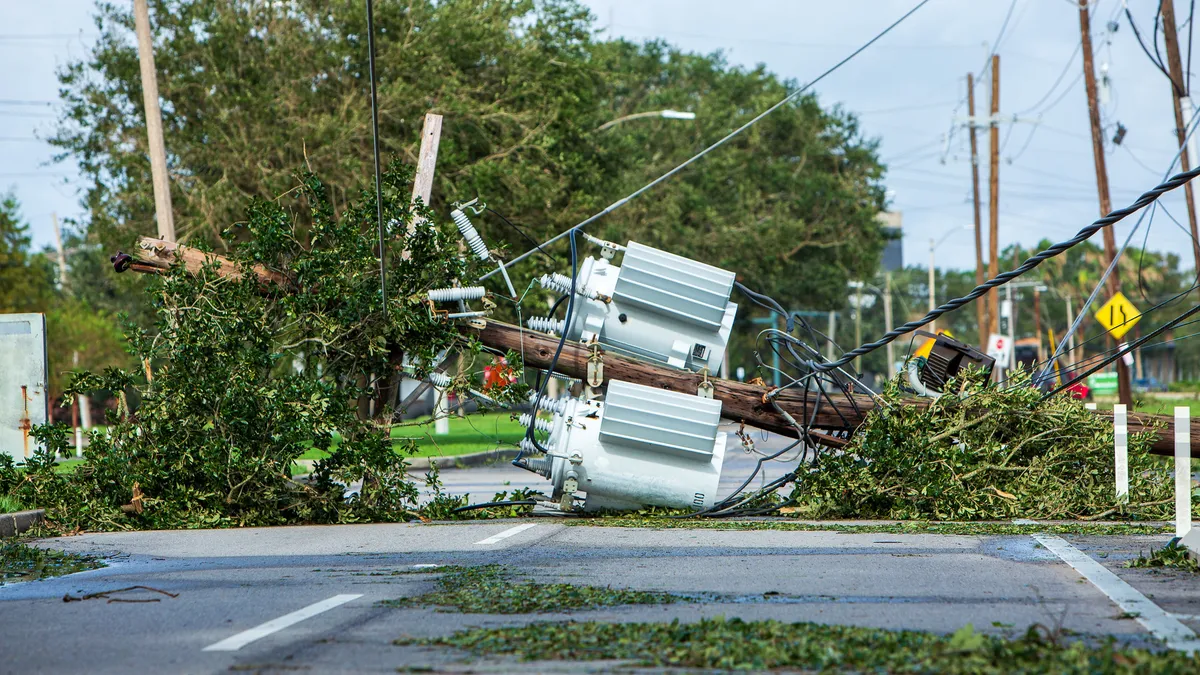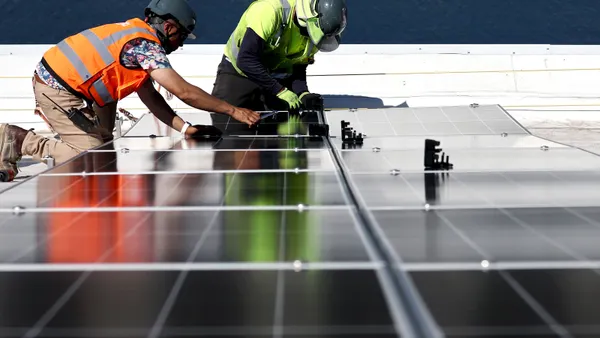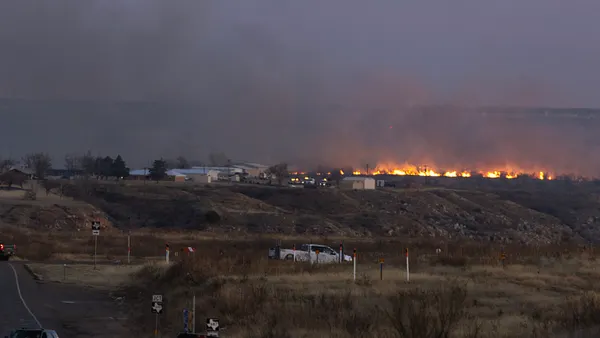Dive Brief:
-
The Department of Energy on Wednesday started taking applications from states, Native American tribes and U.S. territories to receive federal funding for projects to bolster grid resilience in the face of increasing power outages driven by extreme weather.
-
The funding, $2.3 billion over five years, can cover a range of projects including hardening the grid, building distributed energy resources and setting up microgrids.
-
With applications due by Sept. 30, the DOE said it will put a priority on projects that will generate the greatest community benefit in reducing the likelihood and consequences of power outages because of extreme weather or other disruptive events like cyberattacks.
Dive Insight:
The Infrastructure Investment and Jobs Act authorized $62 billion for DOE programs, including a $2.3 billion formula grant program aimed at improving grid resilience.
Power outages from severe weather have doubled since 2002 and the frequency and length of the outages reached their highest levels since reliability tracking began in 2013, with U.S. customers on average experiencing more than eight hours of outages in 2020, the DOE said in a press release.
“Multiple pathways exist for the United States to meet its infrastructure resilience and clean energy goals, but all require upgrading and expanding the nation’s transmission and distribution systems; significant investment in cost-effective new generation resources and energy storage; and efficiency, decarbonization, and demand flexibility investments in buildings, industry, and transportation,” the DOE said in an overview of the grant program.
Resilience improvements may include upgrading individual hardware components, software components, or both, as well as enhanced grid operations or new grid configurations, according to the department. Projects can also implement monitoring, controls, and advanced modeling for improved real-time grid awareness.
“Through this program, DOE intends to have states and Indian tribes develop and apply objectives and performance metrics based on their particular needs and policies for reliability, resilience, good-paying jobs with the free and fair choice to join a union, and equity that are additional to DOE reporting requirements,” the department said.
States and tribes can allocate the funding to grid operators, energy storage operators, distribution utilities as well as power plant and transmission owners, the DOE said.
States and tribes must match 15% of any grant awards with their own funding, according to the DOE.
Through the 5-year program, the DOE intends to offer $369.1 million a year to states, $82.3 million a year to Native American tribes and $7.6 million annually to U.S. territories, according to a proposed allocation plan. Proposed annual allocations for states range from $33.8 million for California to $1.5 million for Delaware and the District of Columbia.















